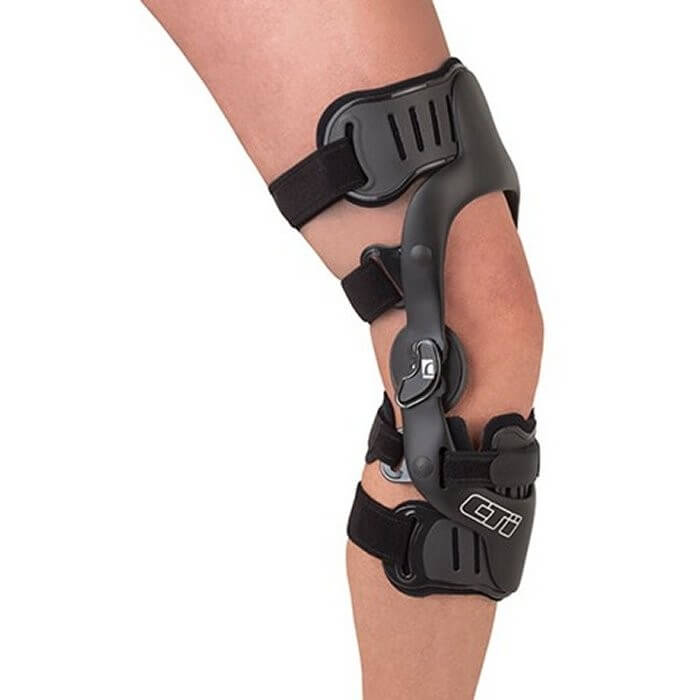Bracing and orthotic management for children with disabilities is often overlooked in physical education. Orthotics may be defined as custom-made devices that are fabricated to address musculoskeletal deformities, deficits, or discrepancies, while attempting to increase function or regain mobility of a specific musculoskeletal structure.

Orthotic wearing schedules, maintenance, and compliance are among some of the most important components leading to successful orthotic interventions or treatment plans. Physicians, orthotists, and therapists work diligently to select the most appropriate orthotic device for a child while considering his or her diagnosis, physical limitations, level of cognition, gait abnormalities, range of motion (ROM), skin sensitivities, and environmental factors. Because children wearing orthotic devices spend most of their time in school settings, it is important for adapted physical educators to understand the basic components of orthotic management in order to meet treatment goals, increase physical function, and most importantly to ensure the safety of the child.
Wearing Schedules
Typically, orthotic braces are prescribed to maintain alignment, prevent further deformity, and facilitate independence during functional activities. Orthotists and therapists generally instruct orthotic patients to wear the device during all physical activities, and recommend disuse of the orthosis during several activities of daily living such as bathing and sleeping. Adapted physical educators should keep the following factors in mind when working with special needs students who wear custom-made orthotics:
- Ensure that the child has a sock or protective stockette lining the orthosis to reduce friction and prevent skin breakdown.
- Ensure that the associated body part is firmly seated against the orthosis and alignment of the joint is achieved.
- Ensure that any securing straps or harnesses are locked firmly to prevent movement of joints or structures inside of the orthosis. (Note: If folds in the skin appear, loosen straps and retighten)
- Ensure that securing straps or the device does not restrict blood flow.
- Ensure that the child ALWAYS wears appropriate footwear with lower extremity orthosis to prevent falls, as polypropylene materials may be slippery on certain surfaces.
- Monitor redness or signs of irritation when removing the orthotic, and ensure any redness or normal signs of use dissipate approximately 20-30 minutes after removal. (Note: Temporary redness may occur since the orthosis attempts to maintain biomechanical alignment)
- IMPORTANT – If redness appears longer than 20-30 minutes or signs of irritation, blisters, ulcers, or lesions are noticed, immediately refrain from using the device, schedule an adjustment appointment with the issuing orthotic company, notify parents to refrain from applying device, inform supervising personal, and document observations.
Orthotic Maintenance
Like most assistive medical devices, wear and tear of orthotics from daily functional use is common. Maintenance of custom-made orthotics should be addressed regularly to prevent the risk of skin breakdown and further musculoskeletal injury. Padding, foam, securing straps, and hinges found on orthotic devices are common components that require replacement, adjustments, or modifications. When these components begin to wear, chances of skin breakdown, pain, discomfort, and joint misalignment increase.
Many children with more severe disabilities present cognitive impairments, and are often unable to effectively communicate pain and discomfort caused by orthotic use or application to their parents, teachers, or healthcare providers. Orthotic adjustment and modification appointments should be scheduled periodically to ensure the device continues to function appropriately to address the individual’s treatment diagnosis. Often, pain and discomfort that is caused by worn components of the orthosis lead to patient non-compliance of the device. For example, a child experiencing pinching sensations from a securing strap on their ankle foot orthosis (AFO) may be reluctant to use the device. If the pain and discomfort from the strap continues, the child is unlikely to continue wearing the device, making them non-compliant with their orthotic intervention, treatment plan of care, or Individual Exercise Program (IEP).
Orthotic Compliance
Orthotic non-compliance, like any other medical treatment non-compliance, remains an issue when attempting to achieve specific goals for an individual. Although the orthotic field goes beyond the scope of an adapted physical educator, it is important and beneficial to understand that poor orthotic management can be an underlying cause behind an unsuccessful IEP when attempting to increase functional physical abilities of individuals with special needs. Adapted physical educators can play an important role in identifying the warning signs concerning improper orthotic management within the school system. If physical educators can recognize issues associated with orthotic wear, the likelihood of skin breakdown, further injuries, future malformations, and most importantly, orthotic non-compliance may decrease.
In a Nutshell
Orthotic wearing schedules, maintenance, and compliance all play a crucial role in achieving an individual’s treatment plan of care and IEP goals. Orthotics are designed to increase function, improve biomechanics, control mobility, prevent further deformity, and provide comfort. Considering the complexities of the human body, providing sufficient and appropriate musculoskeletal support without hindering function goes a long way. Whether a child wears an AFO with dorsiflexion assist, a Thoracic Lumbar Sacral Orthosis (TLSO) for scoliosis, or bilateral University of California Biomechanical Laboratory orthosis (UCBL) to address bilateral flatfoot deformity, ensuring that the individual is able to comfortably function as normal as possible in society, should be the priority of all healthcare providers, adapted physical educators and family members involved in the individual’s treatment plan.
